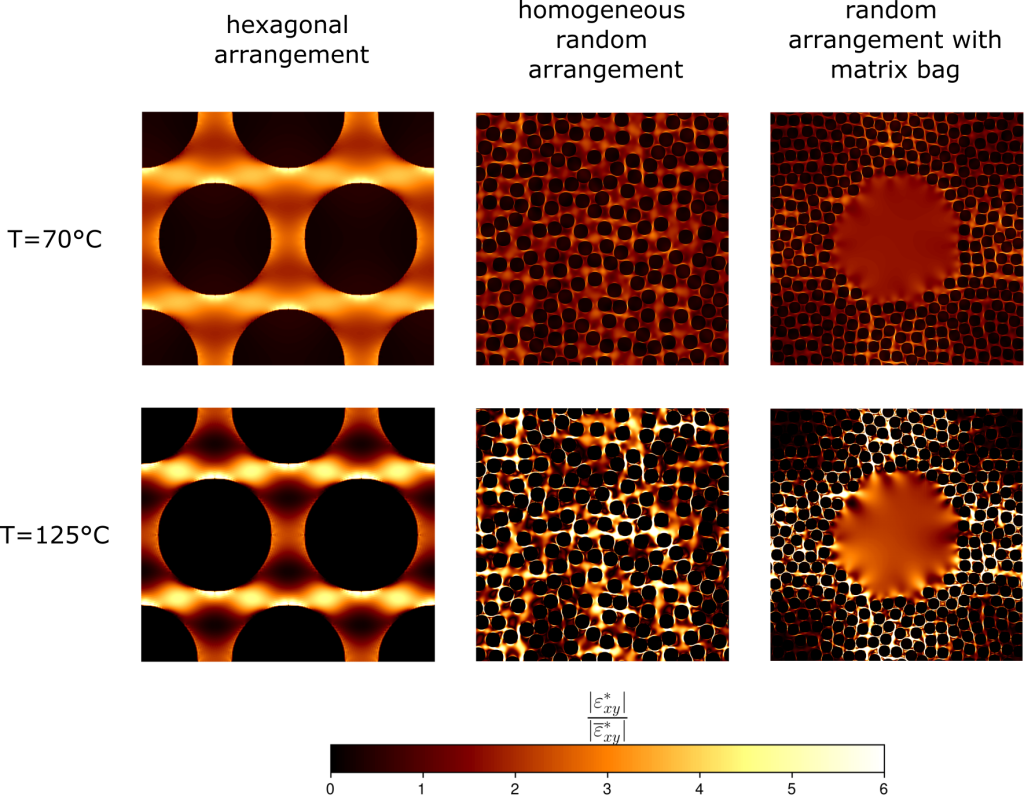When dealing with isotropic polymer, it is easy to characterize the linear viscoelasticity in the lab via dynamic mechanic analysis in tension, torsion. What about for a transversely isotropic material such as a carbon fibers reinforced polymer? Actually, one may find out that it is not possible to directly assert any of the five parameters characterizing its behavior.
In this work, we have tested in dynamic torsion, specimens that have been cut with different angles with respect to the alignment of the carbon fiber, on a wide range of temperatures from the polymer glassy state to its rubbery state. Then, we have applied micromechanics using full-field FFT-based homogenization to estimate the viscoelastic behavior of the composite and finite element simulations to reproduce the experiments. During this work, we ran FFT-based homogenization for highly filled isotropic fillers, with isotropic and transversely isotropic fibers, randomly dispersed or arranged in an hexagonal fashion.

We found out, that in the glassy state, we are able to reproduce well the experimental results. However, in the rubbery state, while the trend is correct the model underestimate experimental reality. This is due to the fact that the micromechanical results are much more dependent on the microstructure when the matrix and the fibers show a very large contrast of the behavior. In the rubbery state, the presence of fiber clusters and matrix bag, evidence by SEM images, has a significant impact on the mechanical behavior.
This work was led by PostDoc student Thomas Merlette.
[1] T. Merlette, J. Diani, 2025. Linear viscoelasticity of anisotropic carbon fibers reinforced thermoplastics: from micromechanics to dynamic torsion experiments. Composites Part B, 290,111931https://doi.org/10.1016/j.compositesb.2024.111931.
